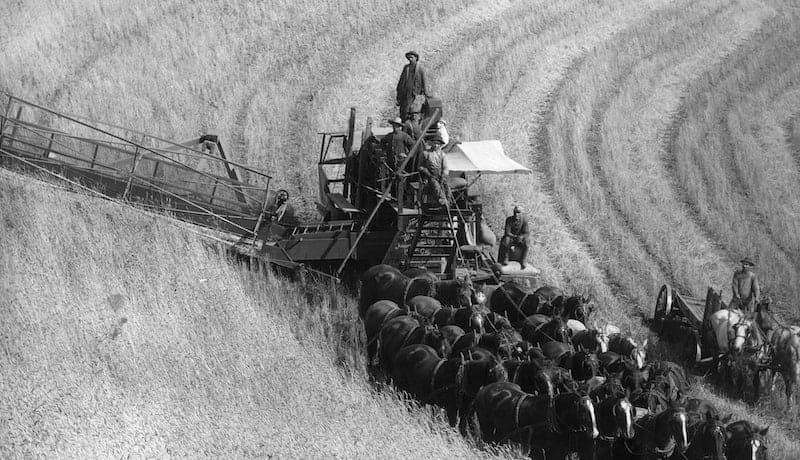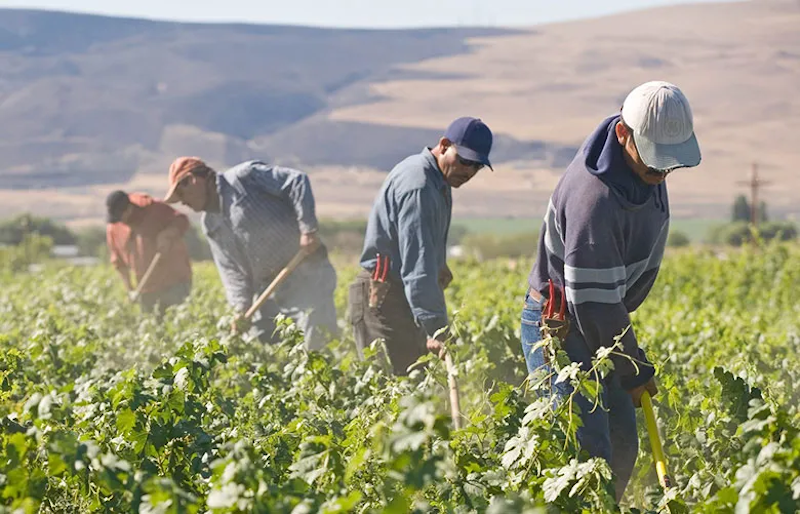Growing to Give Project - Palouse Small Farm Incubator
The Schierman family has been involved in agriculture on this property for 108 years. The current caretakers of the farm are Tom and his son, James Schierman, along with younger brother Jon Schierman, who currently resides and works off-farm in the Cheney-Spokane area. James will be the 4th generation to take over managing the farm.
The Schierman Family Legacy
Great Grandfather C.S. moved from a lesser rainfall region south of the current farm and raised funds to purchase this property by auctioning all of his horses, horse-drawn equipment, and associated farm parts. Starting over with a new horse-drawn farming operation, he acquired 585 acres of quality dryland grain and productive hay ground, along with a complete homestead on a year-round creek. This region had an average of 14-16” of rainfall a year, compared to the original area’s average of 10-14”, enabling more income generation to lease additional acres and purchase new farming equipment. By leasing ground from neighbors and family, the farm grew from 585 to 1400 acres of wheat and barley.
Challenges and Adaptation
During the 1980s, weak commodity prices led the family into growing debt. Equipment trading and farmstead growth were put on hold, and no additional ground was available to lease. This strained family relationships and mental health. The family attempted to diversify by starting a tree nursery, which evolved into selling native trees, shrubs, and a CSA with vegetable and herb starts. However, neighboring leases were not renewed, and the bank loans could not be paid with the 585 acres through traditional dryland cropping methods. The bank forced the sale of the farm, which led to a divorce between Tom and his wife, Luanne, after 35 years of marriage. Tom managed to retain 34 acres for future generations already working on the farm.
Conservation Efforts
Tom installed 100 acres of grass conservation buffers to prevent hillside erosion and improve poor soil quality. He also planted thousands of trees into 50 acres of steep “eyebrows” that could not be farmed, with assistance from conservation programs. However, the new owners removed the grass buffers, farming and spraying close to the trees, leading to a loss of conservation potential. There is a pressing need to change these practices globally by supporting regenerative farms and focusing on fresh, organic, local foods.
Current Initiatives
On the remaining 34 acres, many conservation practices have been implemented. These include permanent grass buffer strips, tree planting along the creek to stabilize the streambank, and a ¼ acre pond dug in 1969 withlocal conservation district help. Over the past 60 years, thousands of trees have been planted, providing wildlife habitat, improved water quality, and numerous soil benefits. Native grass conservation buffers were established on the hillside, and pastures were planted in the valley to reduce tillage and protect the soil.
Partnership with GTG
The Inland Northwest region, known as the Palouse, is a massive rural food desert despite being a leading grain producer. Thousands of rural residents lack access to fresh, healthy foods. A significant portion of the grain crop is exported and often returns as unhealthy processed foods. The recent surge in Canola planting offers little sustenance and is concerning as more farms are taken over by large corporate interests, reducing opportunities for small farmers to produce fresh local food.
A partnership with Growing To Give (GTG) will significantly enhance community food security by installing Crop Circle Farm systems, which use 90% less water, a crucial benefit for the water-scarce Palouse region. These innovative systems will increase local food production, ensuring a steady supply of fresh produce specifically in St. John. By improving access to locally grown fruits and vegetables, this initiative will help mitigate the impact of the food desert in the Inland Northwest, fostering a healthier and more self-sufficient community.
Get Involved, Volunteer, Partner, Donate




.png)
.png)
.png)

.png)